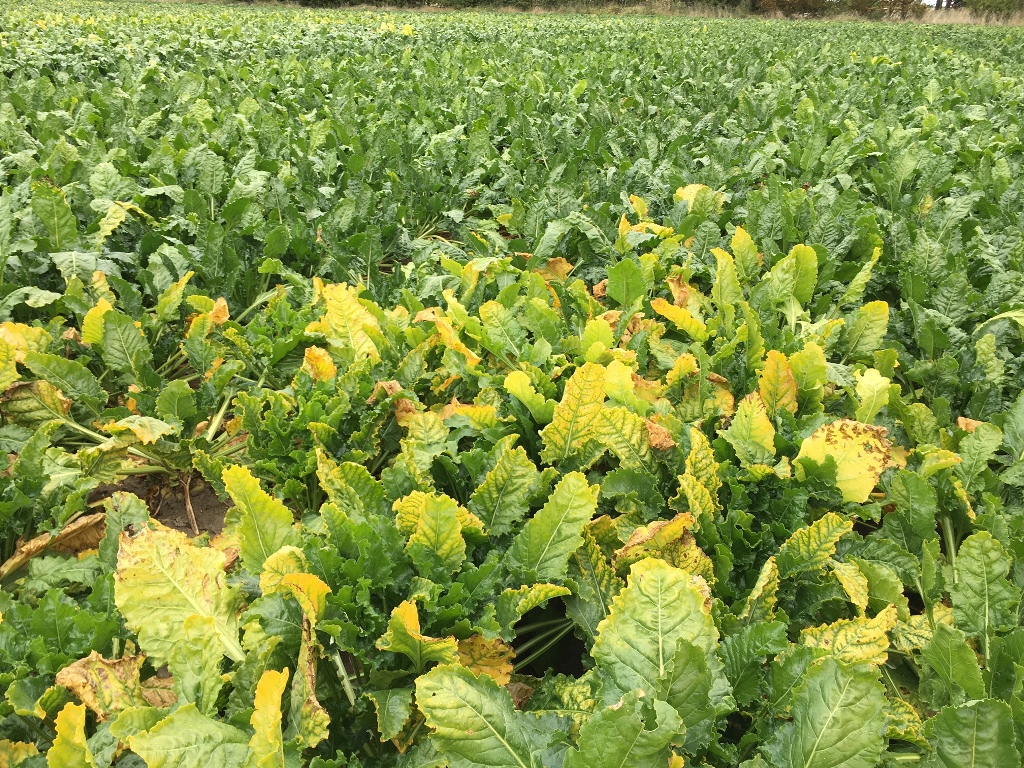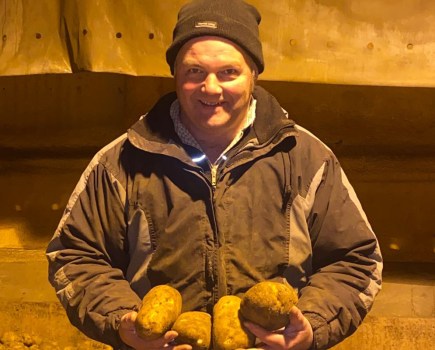
After attending the BBRO’s technical conference last month, there’s no denying I’ve joined the ‘older’ generation of agronomists.
For the past 25 years, sugar beet agronomy hasn’t been complicated by the threat of virus yellows – it’s only us oldies that remember life before the neonics and what an absolute blessing they were when they first arrived in the early 1990s.
Back in the day, pyrethroids and carbamates were still effective, so that helped the job. Nowadays pyrethroids are more hindrance than help because of both the degree of resistance in the peach-potato aphid (Myzus persicae) population and the adverse effect they have on aphid predators.
So that leaves just the more selective aphicide, Teppeki (flonicamid), to cover the period when sugar beet is at most risk from virus infection. But with only one application permitted and anti-feeding activity that persists for a maximum of three weeks, applying it at the right time will be critical.
So with aphids reaching highs before Christmas, a winter that has, in most areas, been exceptionally kind and with a double-whammy of temperatures reaching double figures during Feb, there’s every reason to expect plenty of aphids in early spring. That could make decision-making very interesting in the field.

For the first time in 25 years virus yellow symptoms may become a more common sight in beet fields.
BBRO will issue the official virus yellows forecast this month so we’ll soon know what we’re up against. Although 99% of sugar beet has been treated with neonic seed treatments in recent years, that unfortunately doesn’t mean the virus yellows threat has disappeared. The neonics did nothing to control the first generation of aphids which fly into crops and have the potential to transmit BYV rapidly. Where they were invaluable was in controlling the subsequent generations, preventing the secondary spread of virus which is the primary cause of yield loss. So the disease has been present in sugar beet, just not at damaging levels
Other hosts of virus yellows include wild beet and common weeds such as fat-hen, shepherd’s purse, orache, common chickweed and groundsel so controlling weed beet and hygiene around spoil piles is going to be even more important this spring. Other things to watch out for are the proximity of oilseed rape and other brassica species which will have harboured peach-potato aphids over the winter.
The BBRO warning system will give the heads up on when winged aphid numbers are increasing and that’ll be when the stress will really start. Forays into sugar beet fields will have to be frequent to watch for the threshold of wingless aphids. The real difficulty will be if that happens really early in the life of the crop and if it does, that’s when agronomist brain ache really will begin.
If herbicide applications are still underway then the judgement call will be whether to tank-mix the Teppeki or change tack with the herbicide programme and apply the insecticide on its own. It’s a decision which will likely depend on the growth of the crop and diurnal range of temperatures. The last thing anyone will want to do is to check growth and a number of different wetting systems in the tank can have that effect on a soft crop. The neonics really did save us oldies from all those decisions!
On a more serious note, an ominous sign is the refusal by our government to give an emergency authorisation for use of neonic seed treatment in sugar beet, especially as 12 other EU countries have already granted a derogation. In time there will be other options as new virus yellows tolerant varieties come online, but right now that’s not the case and a transition period would have been helpful to British sugar beet growers. More and more we’re expecting answers to the pest and disease problems we face to come from the plant breeders and they’re doing an amazing job at coming up with the goods, but it takes time.
So it’s going to be a year of being mindful of a threat we haven’t had to even think about for decades. Time to brush up on Myzus persicae ID and dig out the spy glass. Let’s hope the BBRO are successful in getting an emergency approval through for an alternative insecticide to give some more options, just in case they’re needed.
Based in Ludlow, Shrops, CPM technical editor Lucy de la Pasture has worked as an agronomist. @Lucy_delaP




